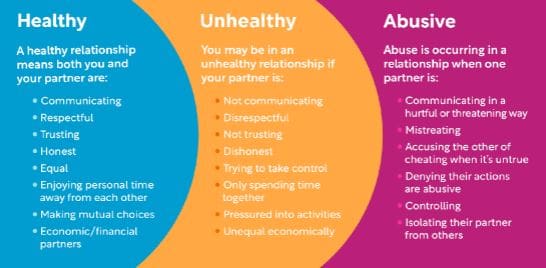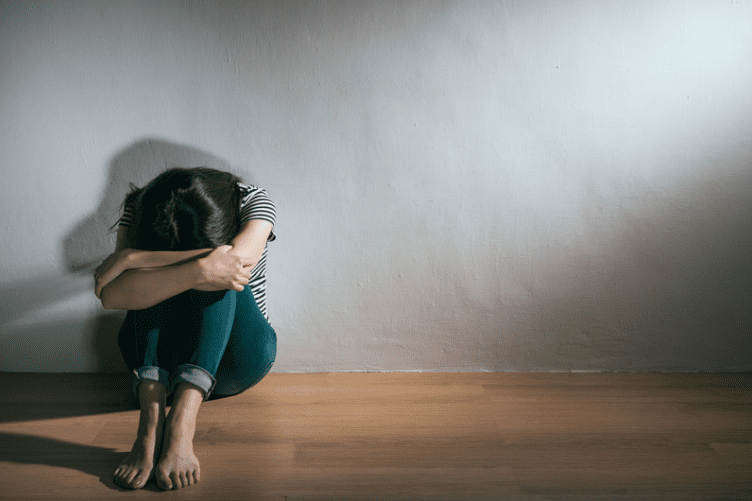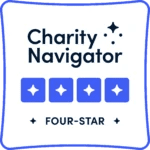Adolescence
should be exciting and fun testing one’s wings with the safety and freedom to fall and soar.
This is especially true when talking about the new concept of dating! It is a time to start to explore what one is looking for in a companion and partner, and how to translate a secure relationship with one’s caregivers to a healthy romantic relationship.
Unfortunately, not all children grow up in a home with healthy relationships. A significant number of teens are learning about relationships from social media, music, television, and the movies or their peers. These influences do not always portray relationships with mutual respect, healthy boundaries, support, care, and freedom for authenticity and individuality.
February is Teen Dating Violence (TDV) Awareness Month
TDV is a form of intimate partner violence that occurs between two people in a close relationship. TDV impacts boys, girls, and non-binary individuals. The Center for Disease Control includes four main types of behavior:
- Physical Violenceis when an individual hurts or attempts to hurt their partner using physical force either exerted with their body or an object.
- Sexual violenceis forcing or attempting a partner to engage in sexual touching, a sex act, or non-physical sexual activity (e.g., sexting) when the partner does not or is unable to consent.
- Psychological aggression or emotional abuseis the use of verbal and non-verbal communication to belittle, intimidate, threaten, coerce, or harm another personal and/or exert control over the individual.
- Stalkingis a pattern of repeated, unwanted attention by a partner or former partner that causes fear or concern for one’s own safety or the safety of someone close to the victim.
Did you know youth ages 12 to 19 experience the highest rates of sexual assault?
Studies also have found that at least 1 in 10 teens have been emotionally or physically abused by a dating partner. Girls and young women between the ages of 16 and 24 experience the highest rate of intimate partner violence, almost triple the national average. The impacts of violence in early romantic relationships normalizes these behaviors and can distort an individual’s definition of love. It is shown that the severity
of intimate partner violence in adulthood is often greater in cases where the pattern of abuse was established in the formative teen years.
How does this relate to trafficking?
Traffickers often pose as romantic partners to young people using promises of love, affection, and large romantic gestures to earn their trust, only to later exploit their partner using the relationship as leverage. Individuals who have grown up in abusive or neglectful households or have experienced violence in a relationship themselves are at increased risk for exploitation. Additionally, research has linked violence in teen dating relationships to increased risk of further intimate partner violence, substance abuse, and risky behavior.
Normalizing the link between violence and love makes survivors of teen dating abuse the perfect target of traffickers.
For many families and schools, talking about trafficking is a new concept and it may seem overwhelming and daunting. As a preventionist, I say, that is completely understandable. Why don’t we instead teach our young people about healthy, unhealthy and abusive relationships. If that is the case, regardless of whether an individual is being abused by a romantic partner, a trafficker, or a trafficker posing as a romantic partner, we can recognize that it is NOT love and NOT ok.
Aside from recognizing they are in an abusive relationship; another obstacle is that often teens don’t know who to go to for help. If their grown-ups are not aware of the partner or maybe don’t approve of their partner, often teens are scared to share that this person they have strong feelings for is making them uncomfortable or is hurting them. Often, isolation is part of the abuse. Abusive partners and traffickers often feed lies to the teen, encouraging them to believe their friends and family cannot be relied upon, trusted, or capable of love.
This month as we raise awareness let us also recognize our role as upstanders. In expressing our concern, intervening, and letting the young people in our lives know we are here to support them and not judge them.
There is no shame- only love.
Practical Tools to Start the Conversation Today
An incredible national organization focused on addressing TDV, Love Is Respect, published what they refer to as the dating relationship spectrum. The spectrum provides a great visual to talk through with the young people in your life.

Red flags and warning signs of Teen Dating Violence for friends, grown-ups, and upstanders:
- Sudden change in academic performance
- Missed classes
- Anxiety around conflicts
- Unexplained/unrealistic explanation for injuries
- Change in appearance or dress
- Withdrawal from friends, family and/or activities
- Depression
- Spending enormous amounts of time with partner
- Constant phone calls, texts, and visits
- Constantly having to “check-in” with partner
- Apologizing or making excuses for partner’s inappropriate behavior
- Seems worried of upset about upsetting partyer
- Participating in sexual contact or risky behavior they were not previously comfortable with
For help one can call the National Dating Abuse Helpline at 1-866-331-9474 or text “LOVEIS” to 22522 or chat at www.loveisrespect.org.
Other great resources including informative videos:
Check back later this week for Part 2: The Green Flags of Healthy Dating!



